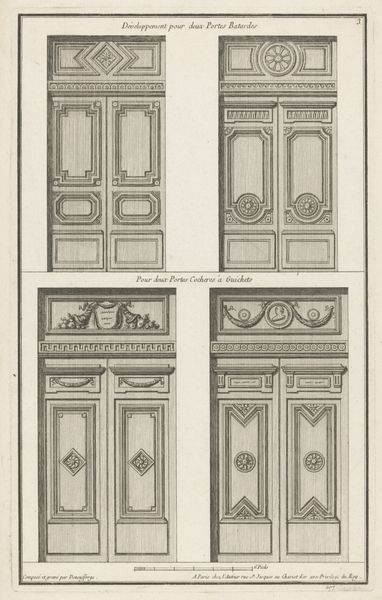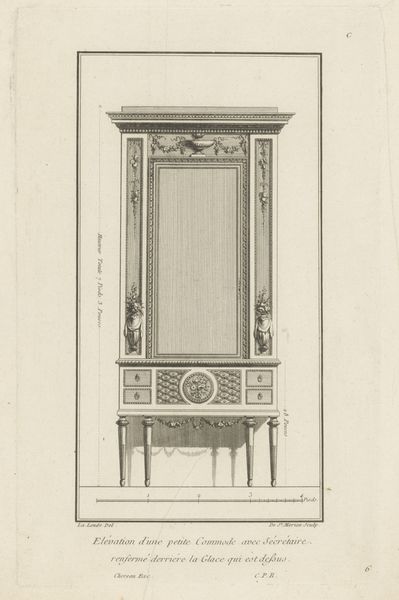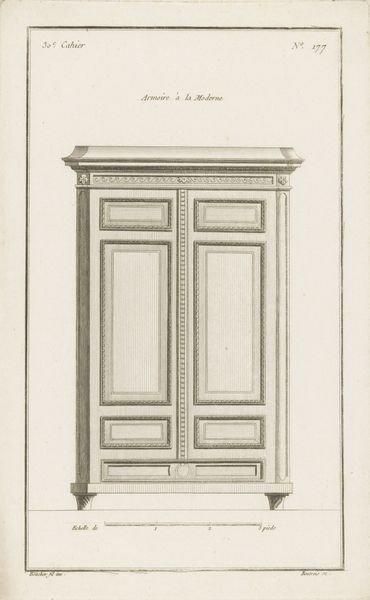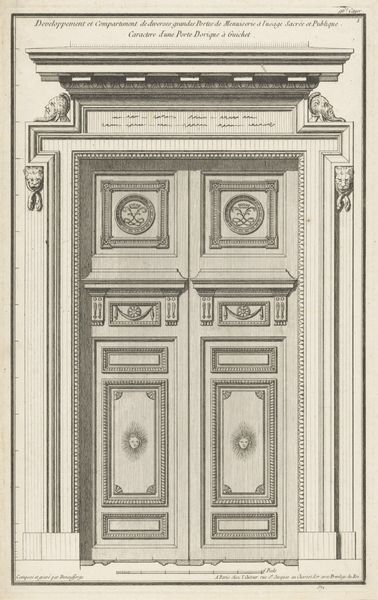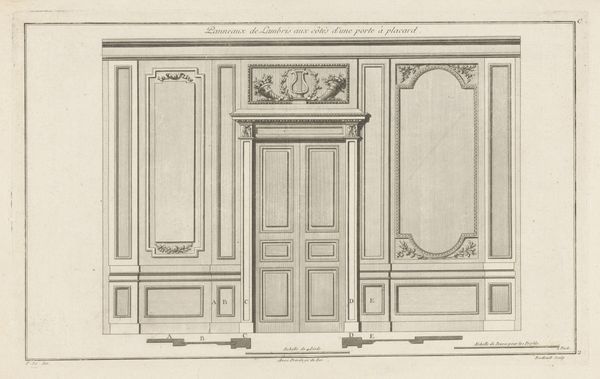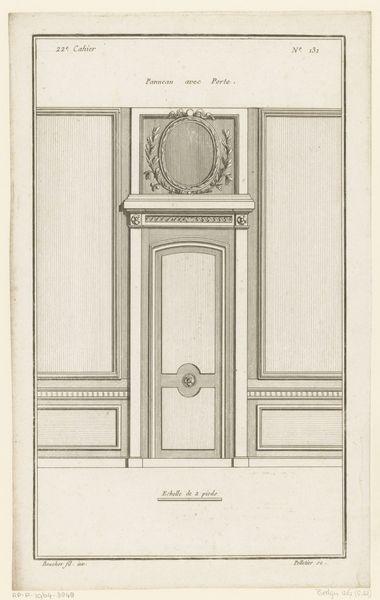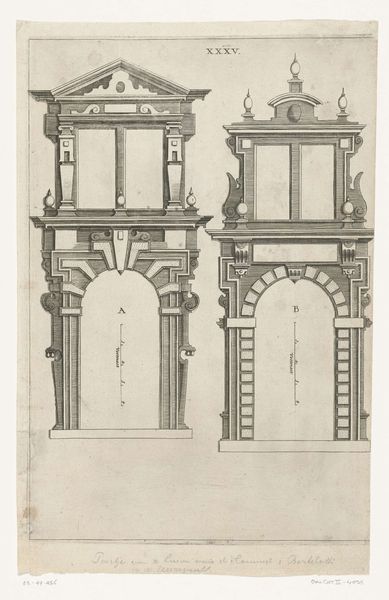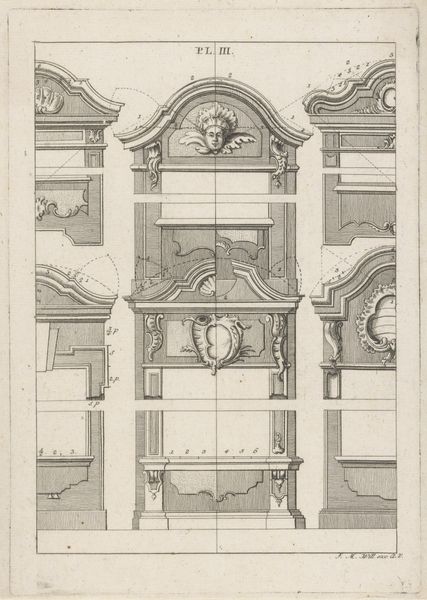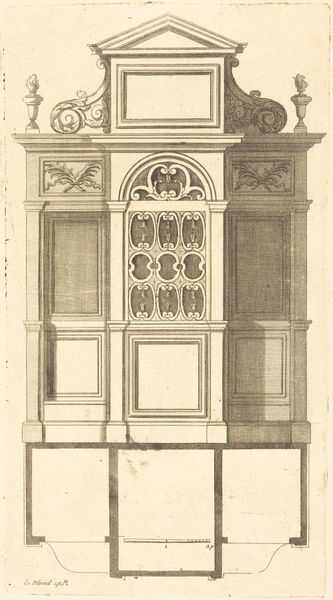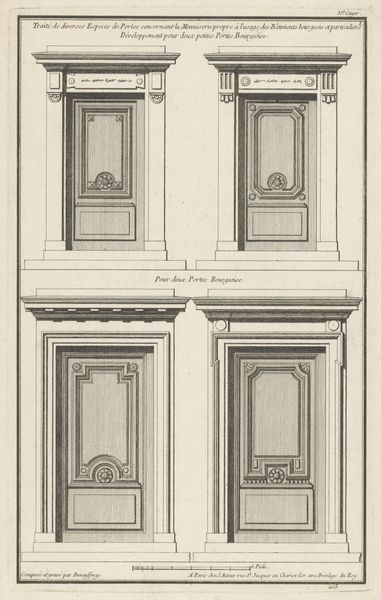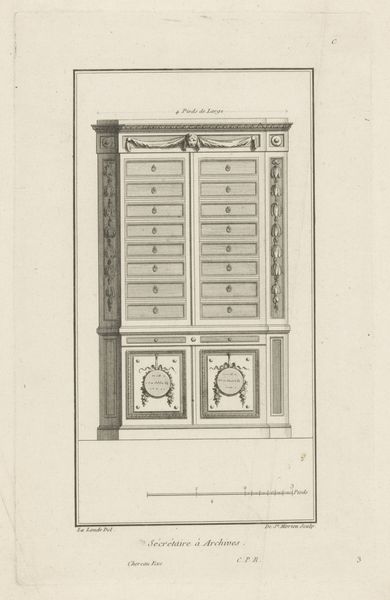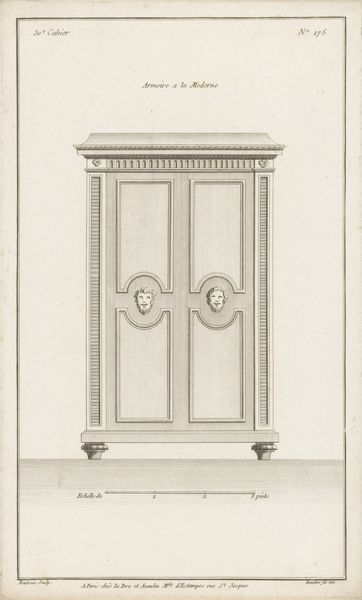
drawing, engraving, architecture
#
drawing
#
baroque
#
old engraving style
#
engraving
#
architecture
Dimensions: height 367 mm, width 230 mm
Copyright: Rijks Museum: Open Domain
Curator: Looking at this engraving, I'm immediately struck by the contrast between the rigid geometry of the doors and the almost frivolous ornamentation. It evokes a sense of controlled opulence. Editor: Indeed. What we have here is "Vier halfronde poorten met bovenramen," or "Four Semi-Circular Doors with Fanlights," an engraving by Jean François de Neufforge dating back to around 1760. Neufforge was known for architectural renderings like this, showcasing designs that would’ve influenced buildings across Europe. It’s currently held in the Rijksmuseum collection. Curator: It certainly feels characteristic of the period. The Baroque style emphasizes elaborate detail. But beyond the aesthetics, I'm wondering about access. These doors appear grand, almost imposing. Were they designed to invite or intimidate? The portraits embedded in the lower pair definitely evoke a sense of who is allowed in this place. Editor: That's a fantastic point about accessibility. The socio-economic context of Baroque architecture is crucial. These doors, meant for carriages, symbolize wealth and power. Only specific individuals or groups could access the structures. Furthermore, elements such as the fanlights provided light while ensuring security, a physical manifestation of class separation. Curator: Right, we see these visual cues—portraits, emblems—effectively communicating who belongs and who doesn't. Architecture can uphold structures of privilege, or challenge it; thinking about the message that's received is critical. Editor: And don't forget the influence of institutions like the Church and monarchy on Baroque architecture. Consider how many public spaces and structures reflect an official aesthetic used as a visual shorthand for state control. Neufforge’s design echoes the powerful elite class through the language of design. Curator: Thinking about the circulation of such images, even, it allows for dissemination and potentially an almost performative embodiment of social structure as these forms propagate and the people interact with and interpret the signals they send about place, hierarchy, and identity. It reminds us how art objects reflect both individual expression and widespread social forces. Editor: Agreed. Looking at this engraving now, I am mindful of the politics and social history ingrained in art and its continuing echoes into the present. Curator: I’m left thinking how these historical symbols continue to affect the architecture we have and will create moving forward.
Comments
No comments
Be the first to comment and join the conversation on the ultimate creative platform.
